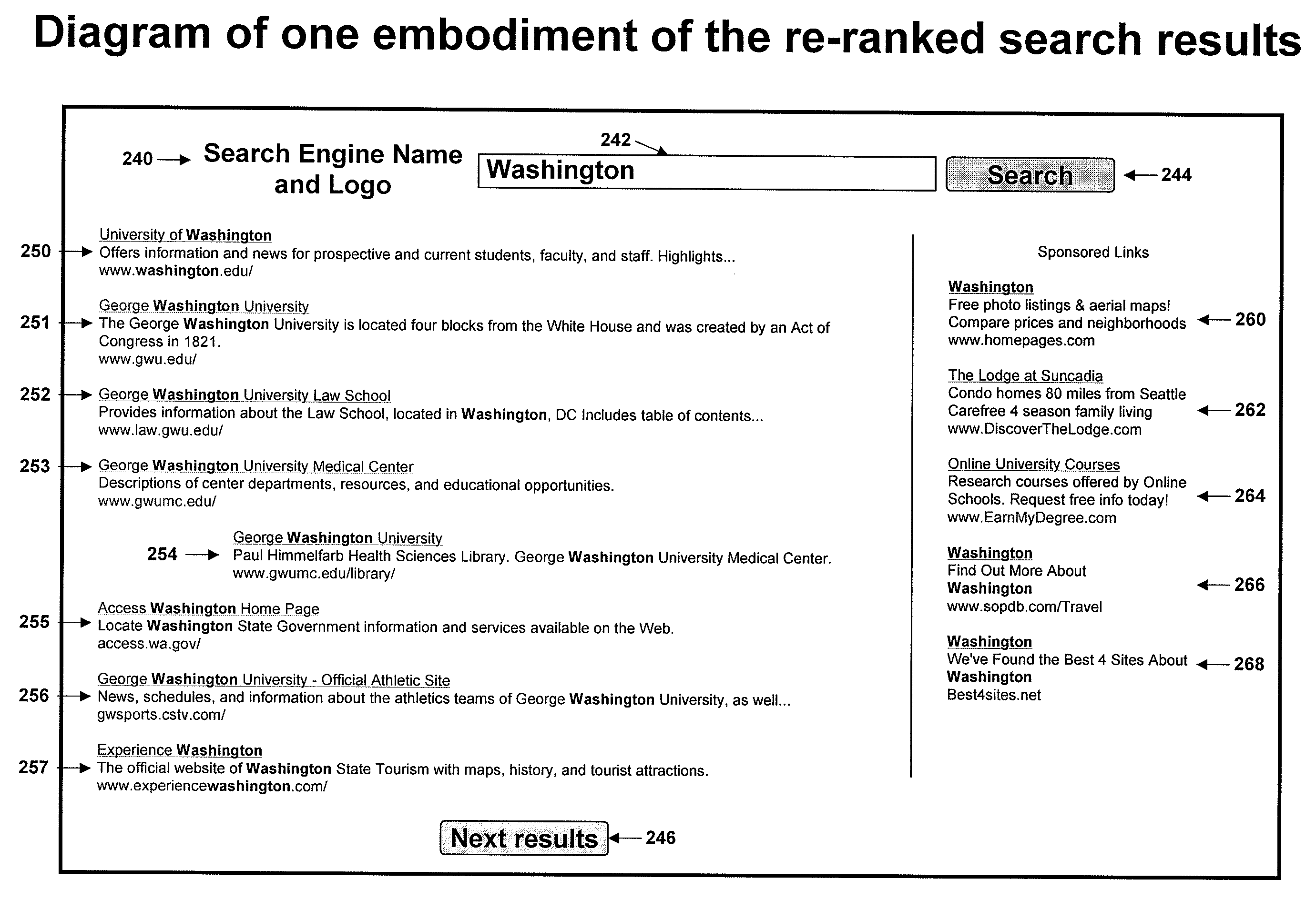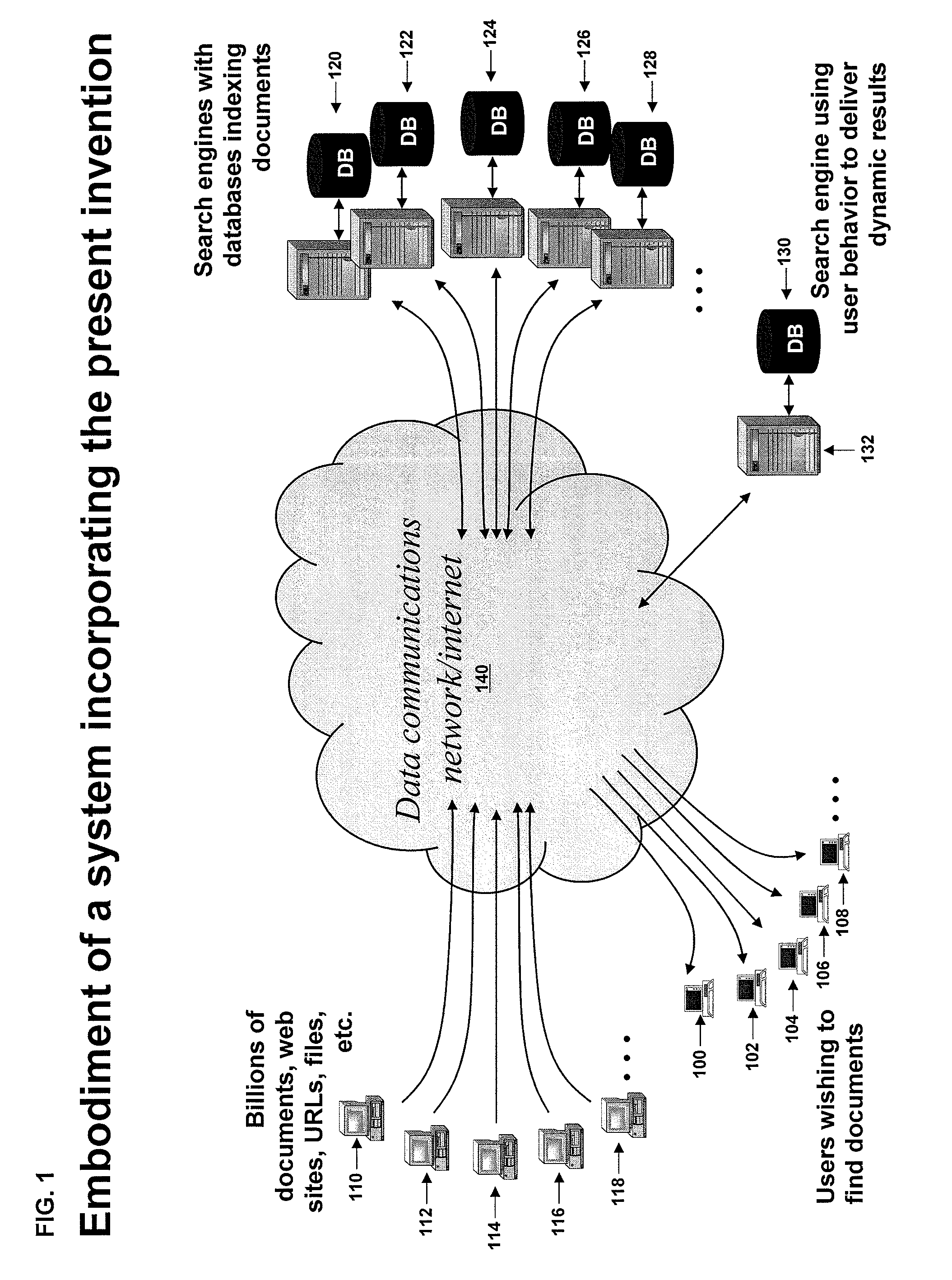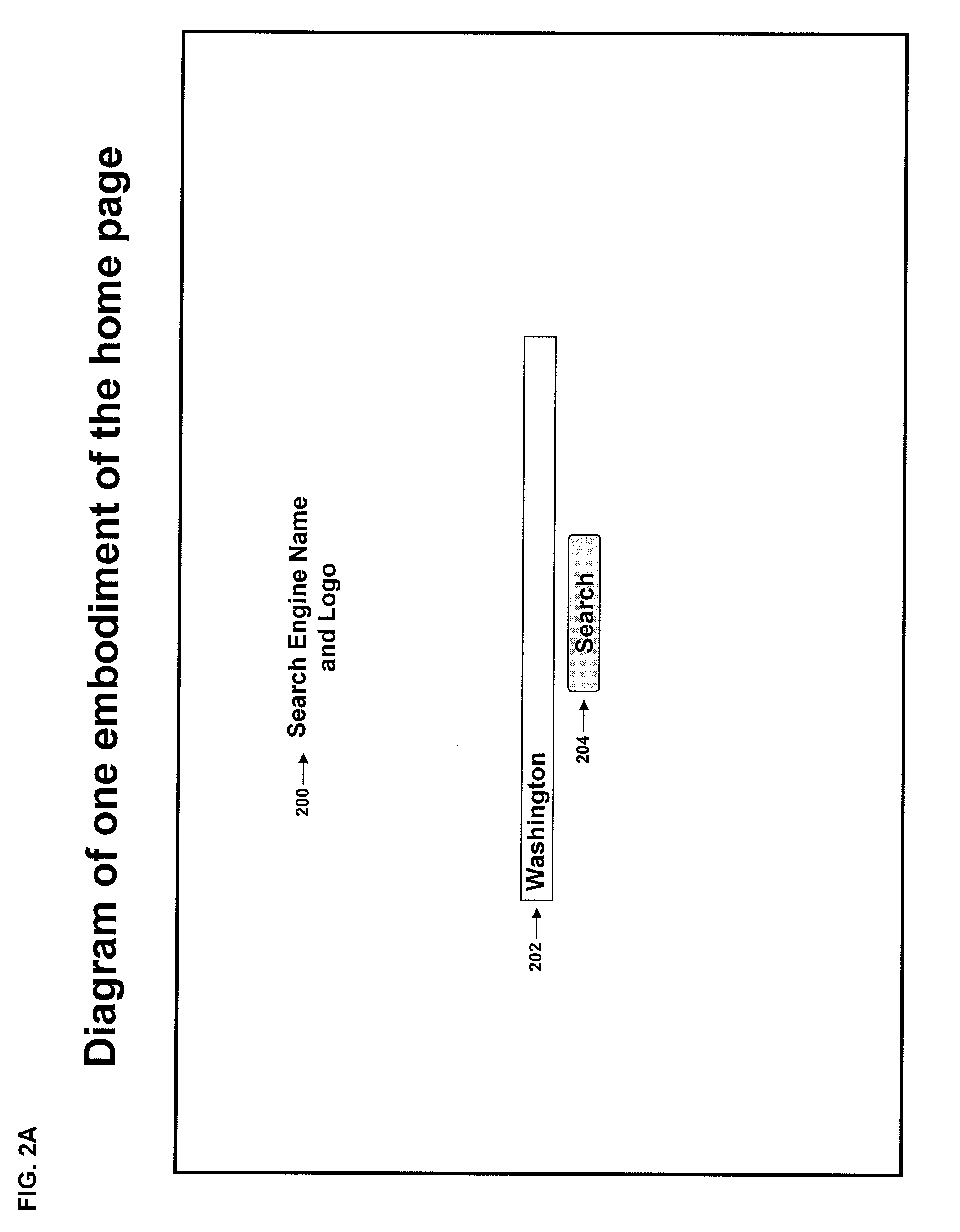Dynamic search engine results employing user behavior
a search engine and user behavior technology, applied in the field of search engines, can solve the problems of affecting the ability of internet search engines to help users identify documents of particular interest to a given query, affecting and unable to know, so as to improve the revenue generation capability of the system
- Summary
- Abstract
- Description
- Claims
- Application Information
AI Technical Summary
Benefits of technology
Problems solved by technology
Method used
Image
Examples
Embodiment Construction
[0024]The preferred embodiment of the present invention operates on the internet, and more specifically the World Wide Web. The present invention, however, is not limited to the internet, the World Wide Web or any other particular network architecture, software or hardware which may be described herein. The invention is appropriate for any other network architectures, hardware and software. Furthermore, while the following description relates to an embodiment utilizing the internet and related protocols, other networks and protocols, for example, for use with interactive TVs, cell phones, personal digital assistants and the like, can be used as well.
[0025]The functions described herein are performed by programs including executable code or instructions running on one or more general-purpose computers. The functions described herein, however, can also be implemented using special purpose computers, state machines and / or hardwired electronic circuits. The example processes described h...
PUM
 Login to View More
Login to View More Abstract
Description
Claims
Application Information
 Login to View More
Login to View More - R&D
- Intellectual Property
- Life Sciences
- Materials
- Tech Scout
- Unparalleled Data Quality
- Higher Quality Content
- 60% Fewer Hallucinations
Browse by: Latest US Patents, China's latest patents, Technical Efficacy Thesaurus, Application Domain, Technology Topic, Popular Technical Reports.
© 2025 PatSnap. All rights reserved.Legal|Privacy policy|Modern Slavery Act Transparency Statement|Sitemap|About US| Contact US: help@patsnap.com



